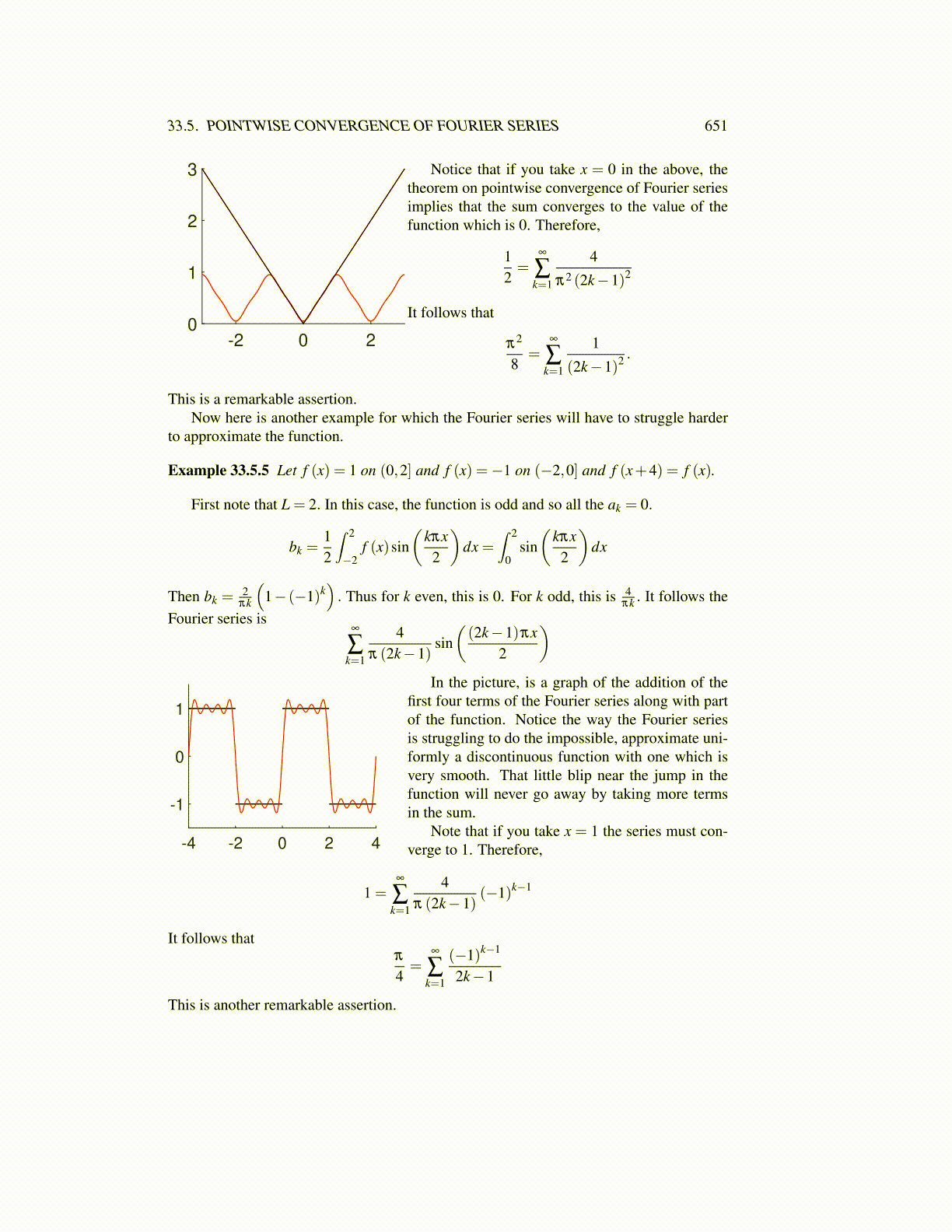
33.5. POINTWISE CONVERGENCE OF FOURIER SERIES 651
-2 0 20
1
2
3 Notice that if you take x = 0 in the above, thetheorem on pointwise convergence of Fourier seriesimplies that the sum converges to the value of thefunction which is 0. Therefore,
12=
∞
∑k=1
4
π2 (2k−1)2
It follows that
π2
8=
∞
∑k=1
1
(2k−1)2 .
This is a remarkable assertion.Now here is another example for which the Fourier series will have to struggle harder
to approximate the function.
Example 33.5.5 Let f (x) = 1 on (0,2] and f (x) =−1 on (−2,0] and f (x+4) = f (x).
First note that L = 2. In this case, the function is odd and so all the ak = 0.
bk =12
∫ 2
−2f (x)sin
(kπx
2
)dx =
∫ 2
0sin(
kπx2
)dx
Then bk =2
πk
(1− (−1)k
). Thus for k even, this is 0. For k odd, this is 4
πk . It follows theFourier series is
∞
∑k=1
4π (2k−1)
sin((2k−1)πx
2
)
-4 -2 0 2 4
-1
0
1
In the picture, is a graph of the addition of thefirst four terms of the Fourier series along with partof the function. Notice the way the Fourier seriesis struggling to do the impossible, approximate uni-formly a discontinuous function with one which isvery smooth. That little blip near the jump in thefunction will never go away by taking more termsin the sum.
Note that if you take x = 1 the series must con-verge to 1. Therefore,
1 =∞
∑k=1
4π (2k−1)
(−1)k−1
It follows thatπ
4=
∞
∑k=1
(−1)k−1
2k−1
This is another remarkable assertion.